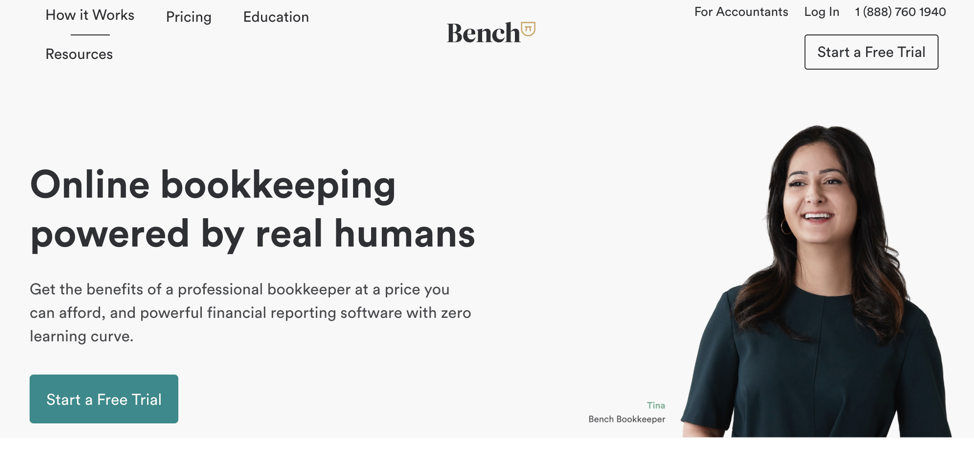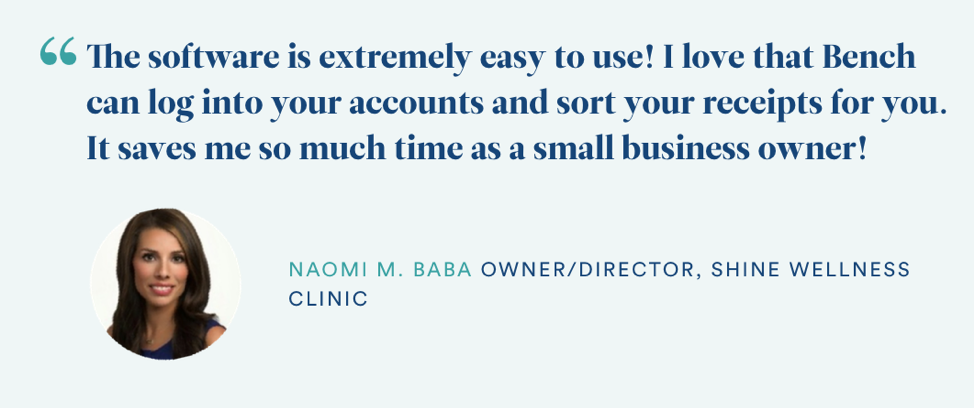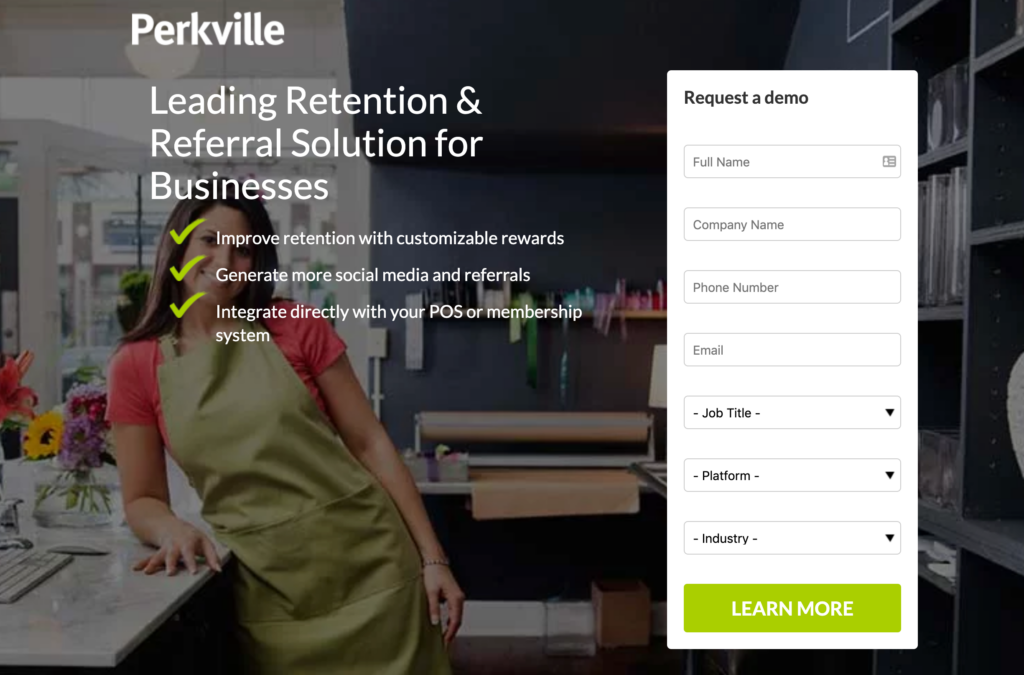
4 useful tips on starting your business with no money or capital

One of the biggest hurdles to launching a business is a lack of business funding.
While acquiring a business loan, seeking out an angel investor, or raising venture capital are all great options for business finance, you don’t always need capital to build and register a business you’re proud of.
In fact, it’s possible to get started and acquire your first customers before you even build a product.
In this useful four-step guide, you’ll learn exactly how to do this. From finding an idea to taking it to market, we’ll explore the steps to building a great business without needing any money or capital.

Top Tip: While you may not need a ton of money or capital to launch your own business, you do need some money to get it off the ground. But determining exactly how much money it will cost to launch your start-up business depends on your chosen industry, location and venue. To learn more about what the average UK startup cost budget is, as well as how to calculate your business startup costs so that you can make more informed business decisions, read our guide to how much it costs to start a business in the UK 💷.
Table of contents
- Step 1: Coming up with ideas that can be quickly validated
- Step 2: Building an audience and generating insights
- Step 3: Getting your first customers (before you build)
- Step 4: Building your MVP
- Step 5: Choosing your business type
- Wrapping up
Step 1: Coming up with ideas that can be quickly validated
Most entrepreneurs who are hungry to launch their own business usually have one of the following hesitations:
- I’m not sure what to launch.
- I’m not sure if people want what I’m offering.
- I’m not sure how to get my first customers.
Each of these come from uncertainty. Many budding entrepreneurs aren’t confident that their own business will succeed, and are apprehensive to invest their hard-earned cash into it.
Which is exactly why this guide, and this first step specifically, is so important. It will help you build that certainty up quickly, and set you up for success.
It all starts with finding the right business idea that leads to a product or service people want. Let’s take a look at the best ways to come up with these ideas quickly.
What are you already good at?
Over the years, you’ve likely developed skills that are already in high-demand. Skills such as:
- Digital marketing
- Content writing
- Graphic design
- UX design
- Coding and engineering
Even better, you might be in a place to see gaps in the market, and how things could be done better.
Top Tip: Conducting market research will help you see those valuable gaps in the market that you can fill with your new idea. But how do you go about successfully uncovering key information about your target market? To understand why market research is so valuable, learn about the various types of market research available to you and exactly how to conduct market research in 5 simple steps, read our detailed guide to how to conduct market research for your business idea ⚡️.
For example, Ian Crosby and Jordan Menashy created Bench, and a productised bookkeeping service that offers monthly services for a flat fee:

While they may be offering a service in a saturated market, they’re doing it in a scalable and unique way. They focus not only on the task of bookkeeping itself, but on how they also save the business owners valuable time. They even quantify this through testimonials:

Service and consulting businesses can be fast and easy to start up. In the early days, it requires no building, coding or physical inventory. All you need is the time to fulfil on what you promise to deliver yourself.
If this sounds hard to scale, it doesn’t have to be. Simply build processes and operational foundations as you go along, and then hire when you can no longer take on any more work on your own.
If you’re not sure what your strengths are, ask your friends or family what they feel you’re exceptionally good at. Chances are, there are soft skills that will position you against your competition
When coming up with a service idea, your offering should:
- Solve a problem or get a job done within an organisation.
- Serve a specific audience (it’s easier to start narrow and expand your offering/audience later).
- Have a clear-cut benefit to the client (i.e. they’ll save hours of time managing off-shore engineers).
Scratching your own itch
Many startups are born from founders solving their own problem.
Take Basecamp, the project management platform, for example. Jason Fried and his co-founders built it while running their web design firm. Why? Because they couldn’t find a solution that had all the features they needed.

It turns out they weren’t the only ones feeling this pain. Currently, over 3.3 million customers use the platform.
Ask yourself:
- What products are you dis-satisfied with?
- What problems do you face on a regular basis that you’re desperate for a solution for?
These problems could be anything, from a coffee cup that doesn’t splash to a meditation app that doesn’t force you to sit still for 20 minutes. Let these needs drive your business ideas.
Identifying gaps in a market you’re passionate about
“Follow your passion” is common advice. But it doesn’t always translate to a successful business.
Why? Because your passion isn’t always what someone else wants. There are dozens of successful artists, and if you want to pursue your passion in this way then you should absolutely do that.
But if you’re more interested in starting a successful business, a better approach is to follow the market, product or hobby you’re passionate about, identify trends and pain points, and tailor your business to solve a specific problem or serve a unique purpose within that market.
Let’s say you’re passionate about coffee. Many entrepreneurs may want to open a coffee shop, or start getting into the e-commerce game.
But what if instead you reach out to your target audience and ask them exactly why they like coffee? Or what they think could be better about the coffee they buy?
By taking this audience-first approach, you can identify gaps in a market you love and build a product that customers love right back.
Not sure how to generate this insight? That’s exactly what we’re going to cover in the next step.
Top Tip: With so many business ideas to choose from, it can be difficult to know where to start. That’s why we’ve created an in-depth guide that explores what makes a good business idea and runs through several real-life business idea examples. To learn more, read our guide to 15 business ideas you can get started with today 🙌.
Step 2: Building an audience and generating insights
Now that you have a business idea or a market you want to serve, it’s time to figure out what you’re going to build.
Before you start building your product or service, you need to make sure that people actually want what you have to offer.
There’s no better way to do this than with live market feedback. This means reaching out and talking to the audience you want to serve.
Here, we’ll dive into how to generate these qualitative insights, as well as how to start building an audience you can sell to once you’ve defined your value proposition.
Top Tip: Now is the time to also begin thinking about a business name. A unique name with a catchy look or sound piques interest and makes you stand out from the crowd. But a great name very rarely falls out of thin air. To learn what factors go into making a good name, how to come up with one and how to eventually register your company name, read our guide to how to find the perfect name for your small business💡.
Instagram: A direct line to your audience
The benefits of social media stretch far beyond creating content and fancy photography. It can also act as a direct line to your customers and audience.
Instagram has become a popular method of conducting customer research. Thanks to hashtags, you can identify people who are posting content relevant to what you want to offer:

Once you’ve found them, reach out to these users and ask them questions about your business idea. Following the coffee example, here’s what this outreach might look like:

As you can see, users are usually very receptive to the idea of lending their thoughts. Don’t be surprised by the amount of information they’ll share with you:

Use these insights to fuel your product and service design, as well as your marketing message. Reach out to 20 to 30 people to make the sample size significant enough.
The added bonus of all this? You have a potential audience for generating pre-sales in the next step.
Top Tip: Building strong relationships with your customers is one of the best ways to grow and scale your audience over time. To learn more about what relationship marketing is and how to effectively build your loyal customer base, read our guide to how to build brand loyalty with relationship marketing, with examples of brands that do it right 👏.
Using data to understand your market
On top of “qualitative” insights, it’s important to use market data and trends to validate your business ideas.
Start by looking at industry publications. What are the topics, trends, challenges and needs being discussed in the market?
For example, if you’re looking to offer a UX design service, you could check out Smashing Magazine and the InVision blog to see what topics are being covered. Here’s an example from the latter:

The article above opens up with the following:
“User-centered design encompasses different research and design tactics that involve the user in each stage of the design process. By keeping the users so actively involved in the process, they’ll stay at the forefront of your design decisions—helping you tailor your design specifically to their needs.”
Here, we can uncover the following nuggets of information:
- What user-centered design is
- Why it’s important for capturing user attention
- That it’s important enough to warrant an entire article on the subject
Another method of uncovering this market data is to search for terms like “top [keyword] challenges” or “top [keyword] statistics” in Google. For example, here’s a result for the keyword “top content marketing challenges” from WordStream:

Here, we can uncover the following pain points:
- Insufficient resources
- Keeping content quality high
- Increasing content competition
If we’re starting a service business, we could focus our offering to solve these specific challenges. When doing this, however, make sure it’s backed by data. In other words, it must come from a large sample size from the audience you’re targeting.
Finally, use tools like Google Trends to see what the demand is like for your idea. Here’s what this looks like on Google Trends for “travel cups”:

As you can see, the number of searches for this product has fluctuated over the last 12 months, but it’s once again on the rise. So it’s likely there’s still demand for a high-quality product in this market.
Building an audience
Many entrepreneurs wait until they launch a product or service to build an audience. But this is something you can do while you come up with your ideas.
With an audience-first approach, you can nurture a community of people in your market and figure out what to build for them. Similar to the Instagram approach above, but on a platform you own.
One of the most effective ways to do this is to create great content. For example, if you find your audience is active on Instagram, create content for them there. You can even curate that content from other people, building influencer relationships in the process:


As you can see above, the original creator was credited in the description. If you follow this approach, make sure you do the same!
Top Tip: Instagram is on fire—there are more than 25 million active businesses on their platform and 80% of Instagram users follow at least one brand. Creating quality Instagram content through a creative marketing strategy can turn your followers into paying customers. To learn more about why you need Instagram for your small business and how to get started today, read our beginner’s guide to Instagram marketing for small businesses 📲.
Another approach is to set up a blog and create valuable, in-depth content that educates and entertains.
This is exactly what Unbounce did before writing a single line of code for their landing page builder. They started with a blog and built an audience around it, providing how-to information for marketers about conversion rate optimisation:

Look for where your audience hangs out online and create content that gets in front of and attracts them. Drive them to a landing page that captures their email address and adds them to a waiting list. This email list will be invaluable when nurturing your new audience and generating insights for your business idea.
Perkville, a referral and rewards program, does this well by utilising short, bulleted copy that inspires visitors to leave their information and learn more.

Step 3: Getting your first customers (before you build)
So, you’ve got a business idea and you’re confident that people are going to want it. Now it’s time to truly validate your business idea.
At this point, most entrepreneurs follow a process that looks something like this:
- They define what their product is going to be.
- They’ll ask people if they want to buy it.
- If they say “yes”, they’ll go ahead and build it.
There’s a problem with this approach. People are more willing to say “yes” to an idea than they are to hand over their cash. We have a tendency to agree with people if we like the idea and the people pitching it, but when it comes time to making a purchase, we can sometimes feel the friction of wanting to buy.
Therefore, the best way to validate any business is through pre-sales. In other words, generating customers before you even build your product or service.
Here’s how you do it.
First, define your offer and benefits clearly
It’s hard to offer something that isn’t tangible. Which is why you need to get crystal clear on what you’re offering to your audience.
For example, if you’re creating a new line of travel cosmetics, you need to be clear on elements like:
- What’s the benefit of these products? Why now?
- Who exactly is it for?
- What are the product specifications?
- What’s the price point?
Top Tip: How you price your products can influence everything from cash flow to profit margins. The right price for you depends on the type of business that you’re launching, your target audience and your competitors. To learn more about the various pricing models you can choose from, as well as how to research the market to discover your target market price points, read our guide to 6 steps on how to price a product and achieve profitable markups 🤑.
You may want to consider offering a discount for early adopters. This can dramatically lower the barrier to entry to buy from you.
Think about other ways you can add value to your customers, such as future discounts after launch, or insider access and the option to have a say in the direction of your company.
Second, write out your offer
Now you’re clear on what you’re offering and why your audience should invest in it. It’s time to reach out to them.
Be transparent with your audience, what you’re hoping to achieve and why you’re doing it. Make the benefits of buying from you clear.
Here’s a sample message you can repurpose for your outreach emails and DMs:
Hey NAME,
I was just doing some brainstorming and thought you’d be a great fit for a project I’m currently testing.
A lot of people have been asking for help with their digital marketing efforts, so I decided I’m going to create a monthly membership site that provides business owners like you with “Digital Marketing Recipes” that give step-by-step instructions for proven strategies to grow your business.
I’m running this test to make sure people want it first, meaning I’ll only start on the project when I get my first 3 paying customers.
The price-point for this pre-launch is £20 a month, which I’ll lock you in to moving forward, (a 50% saving as I’ll be charging £39 /mo when I go live!)
Also, as you’re helping me start up, I’ll create a tailor made marketing recipe to a specific problem or challenge you have right now. If you’re interested, let me know and I’ll send my PayPal details over.
Open to any feedback.
Thank you in advance!
Here’s why this outreach message works well:
- It reaches out to someone the sender knows (see our audience-first methodology above)
- It gets to the point about what the sender is offering, and the benefits of signing up
- It offers a unique bonus to the recipient i.e. a bespoke offering
- The conversation is set around commercial intent, not fact-finding
- The call-to-action will get a yes, no or a request for more information
At this stage, you should aim to generate a handful of pre-sales, as the purpose is to see if people are willing to buy what you have to offer. Save the volume for when you have a product and you’re gaining traction.
If you’re solving a big enough problem, you’ll find people are willing to invest in what you have to offer.
Finally, learn from feedback
You’re not always going to hit a home run the first time you go through this process. And that’s okay, as long as you learn from the feedback you receive from your audience.
If people say no or ask questions, this is an opportunity for learning. If people aren’t willing to buy what you’re offering, it means you haven’t found a big enough problem or desire in the market.
When you come across these hurdles, look to find out what you’re missing. If you already have an open dialog with prospective customers, encourage them to be candid in their feedback.
There’s no feeling quite like making your first sale. The purpose of generating pre-sales is twofold:
- Validate there’s a commercial need for your business idea
- Give you the confidence that your venture is likely to succeed
You’ve secured some customers, and now it’s time to deliver. This all starts with a minimum viable product (MVP).
Step 4: Building your MVP
A minimum viable product, according to Technopedia, is “a development technique in which a new product or website is developed with sufficient features to satisfy early adopters. The final, complete set of features is only designed and developed after considering the feedback from the product’s initial users.”
While the term was originally coined for tech companies, it can apply to any business model when starting out. Here, we’ll outline what the MVP process looks like for software or app products, physical products and service-based businesses.
MVPs for Service Businesses
For a service business, the validation and MVP process is probably the simplest. When you’re starting out, you’ll be able to fulfil the service offering yourself. This has several benefits:
- You can build out processes for when you’re ready to scale
- You can build long-term relationships with your clients
- You’ll identify the pain-points you’re alleviating, which will help inform your future marketing message and positioning
Focus on the one thing you do to solve a specific pain-point and make your service offering all about that. For example, this is what Tide member Grizzle did in the early days, offering a guest blogging service to SaaS companies:

It took the founder, Tom, a weekend to put together a one-page website, prospect 100 leads and reach out to them. He validated his business by getting his first sales appointment in a week:
“I tried a few approaches to starting a business over the years, but none of them ever really took off (beyond an eBook I pre-sold eight copies of). I realised I was over-complicating things by creating content, establishing a presence etc. instead of focusing on what really matters: getting customers.
“So, I focused on only the things that mattered, and prepared an experiment over a weekend. If I couldn’t get a sales appointment in 10 days I would move on.
“But it worked! Not only did I get my first appointment during the first week of outreach, I actually closed my first three clients within around 45 days. For a high-ticket marketing service, I was very pleased with the sales cycle at such an early stage.”
Tom Whatley, founder of Grizzle
Remember, when serving your clients, they want results. Don’t complicate things by adding to what you can do for them. Instead, focus on the results you bring, and do only the essential work needed to achieve them. You can always broaden your offering and up-sell further down the line.
MVP for Software & Apps
When starting a technology company, you’ll need to build a mobile app, platform or software to fix the problems you promised to solve.
Here, the aim of the game is to get your product into the hands of your customers as fast as possible. But “minimum” doesn’t mean “scrappy”. If you deliver a sub-par product, you won’t create happy customers, and marketing your product will be difficult.
As listed above, the MVP for your digital product should aim to solve a specific problem. This means leaving any functionality that is not essential for serving this role out of an early build.
Here are a few things to keep in mind when building your MVP:
- Gather feedback early: Use your initial customers as a method of getting feedback. Treat them as beta testers, and ask them what they find valuable, what they like and what you could do better.
- Keep convenience in mind: When building your app or software, make the design flow super simple for customers to navigate. This will set some creative restrictions, forcing you to add only the necessary steps and features.
- Measure success: Are your customers referring new users after launch? Is there a high level of engagement? Look at your analytics to see how your users are interacting with your app, how long they’re sticking around for and which features they’re using the most.
Building an app or SaaS company requires an entire article in itself. Luckily, you can check out this article from Net Solutions to learn more.
MVP for your E-commerce Business
Building a physical product can take time. But it doesn’t have to be complex in the early days, and you can order a small amount of inventory to keep those initial costs low.
Depending on the product, you’ll need to go through a supplier, manufacturer or fulfilment service to get it built.
Here’s a quick checklist to getting your physical product from an idea to reality:
- Mock-ups: It helps if your customers have a fair idea of what you’re building before they commit to it. Getting your product designed doesn’t cost much, and you can use a service like Upwork or 99designs to find someone to create your mock-ups.
- Finding a manufacturer: “Breaking the mould” refers to a manufacturer creating new moulds to create new products, which drives up the costs of starting up. If you’re improving upon an existing product, you could find a manufacturer who already builds something like it and see if they have the existing “moulds” to get to market quickly.
- Order samples: Make sure that the delivered product is of high quality before you commit to a minimum order.
- Keep packaging simple: Packaging is important in the e-commerce world, as it acts as a reflection of your brand. In the early days, focus on delivering a quality product first. As you grow, invest profits into your packaging and design to improve the experience you deliver to customers.
- Deal with fulfilment at home: Order a hundred or so units to start with and do all the fulfilment manually. This means packaging and heading to the Post Office yourself! As you grow and you generate more customers, you can look into fulfilment services.
Gretta van Riel, the founder of Skinny Me Tea, followed a similar checklist when she got started. She packaged her teas in plastic bags before investing in better packaging, and used a simple Shopify theme to set up her store.
In fact, she uses this same theme today. Which just goes to show: you don’t need to get fancy to build a strong brand.

You can read more of Gretta’s story here.
No matter what type of product you’re building, make sure you keep things simple. In the early days, all that matters is delivering a product or service people love.
Top Tip: E-commerce is no longer a novel, unproven and untrusted market, especially in a landscape forever changed by COVID-19. In fact, by the end of 2020, e-commerce is set to account for 27.5% of total retail sales. To learn more about what it takes to start and run a successful e-commerce business, read our detailed guide to how to start an e-commerce business in 12 steps ✅.
Step 5: Choosing your business type
Now that you know what kind of business you’re going to run, your target market and audience, your price points and business name, and have successfully tested your MVP, it’s time to choose your business structure and register your business with Companies House.
There are three main company formation types to choose from:
- Registering as a sole trader
- Registering a limited company
- Registering a business partnership
There are several pros and cons to each of these types of business. The main differences between the three include the following variables: set up processes, how much control you have over your business, running costs, privacy, liability, financing availability and tax guidelines.
If you’re unsure which structure to choose, we’ve outlined the key differences and benefits of the most common choices in our sole trader vs limited company guide, to help you make an informed decision.
If you choose to set up a limited company, you can register your business for £14.99 with Tide. We’ll also open a free business bank account for you and if you need to, you can opt for a virtual office address to keep your home address/home office space private (there’s a small fee for this). Ready? Get started.
Wrapping up
As long you’re building and setting up something people want, you’re on track to succeed in your new business endeavour.
Make sure to follow these tried and true best practices along your business planning journey:
- Find ideas to validate by tapping into skills you already have or finding gaps in the market.
- Get insights from your audience and start building relationships.
- Generate pre-sales to fund your product or service and build confidence.
- Build an MVP before you scale further.
There’s immense value in starting small before you scale. Focus on validating your idea, perfecting your offering, writing a detailed business plan to help you stay focused on what you need to accomplish your goals, and getting it to market. Once you launch, consider finding a business mentor to help you enhance and optimise your skillset so that you can scale your professional acumen alongside your business.
Photo by Tamarcus Brown, published on Unsplash




